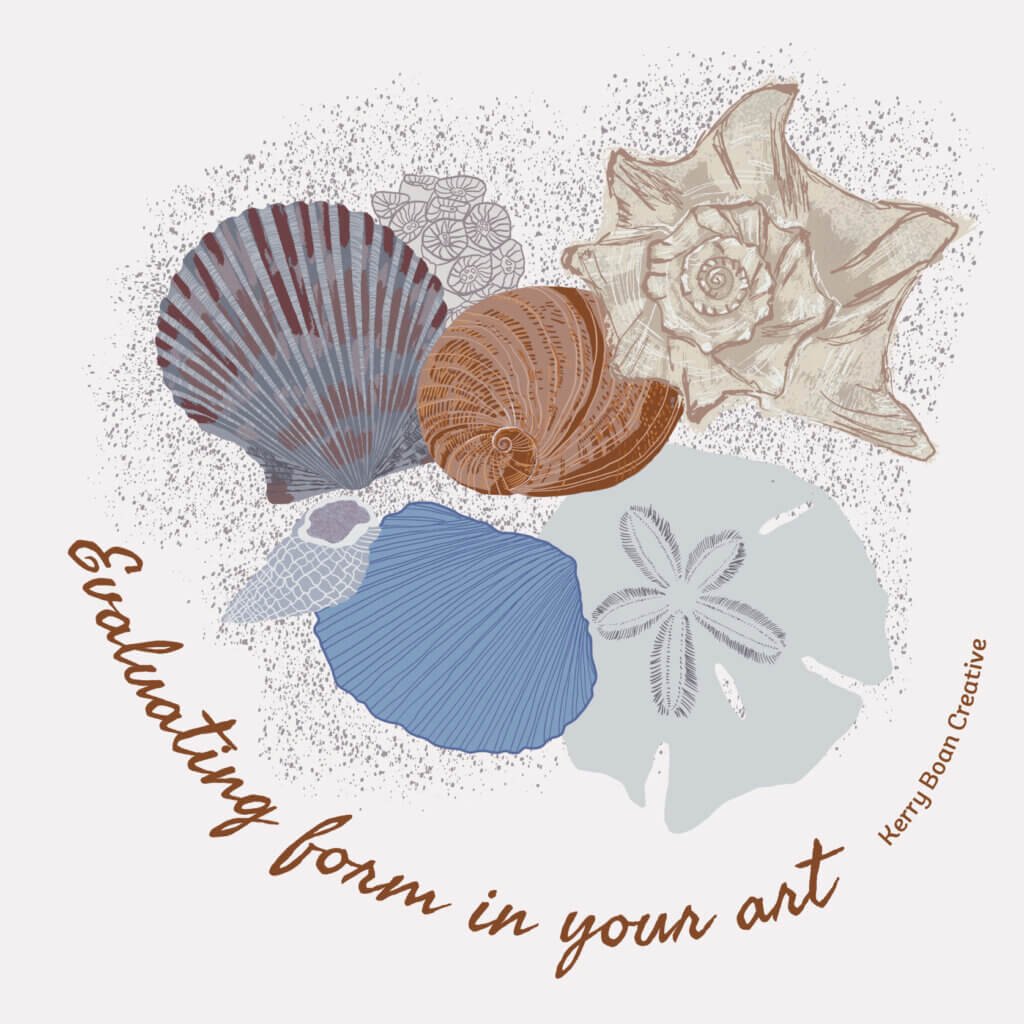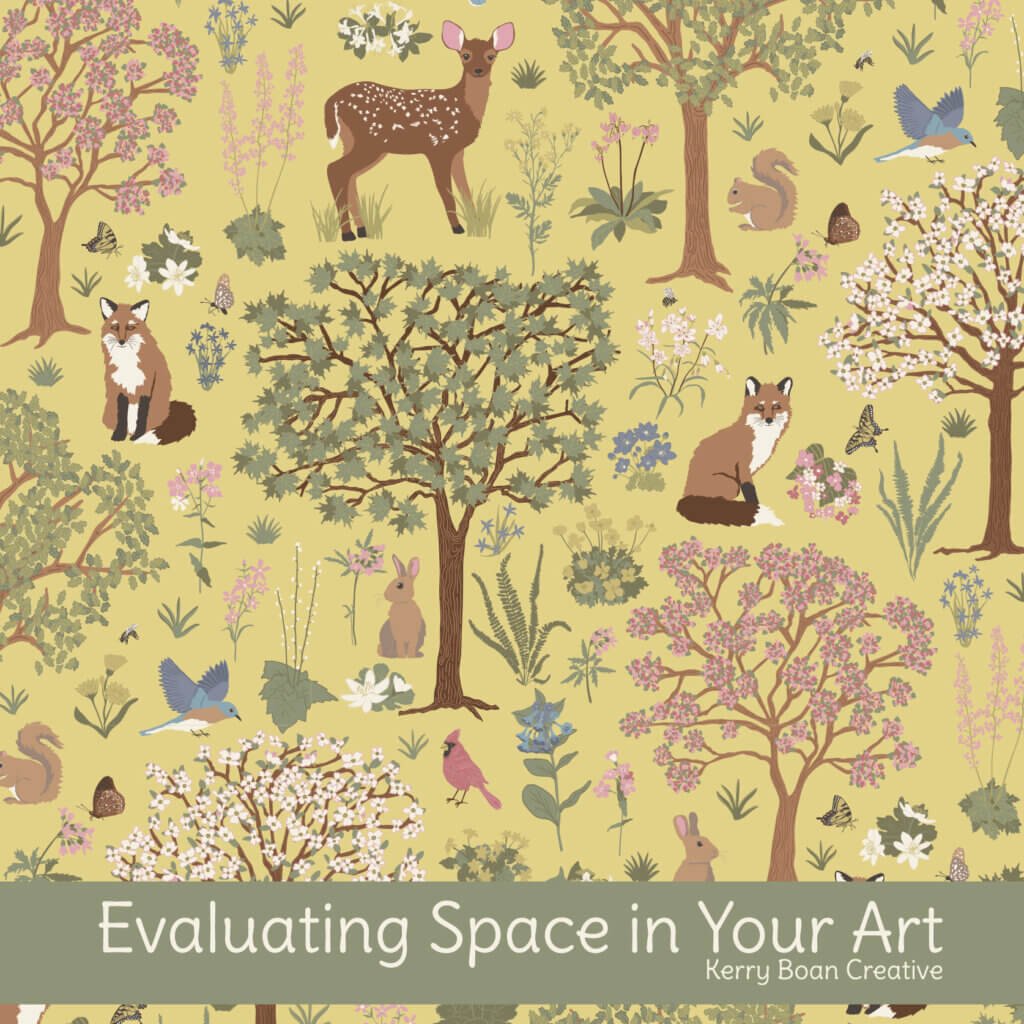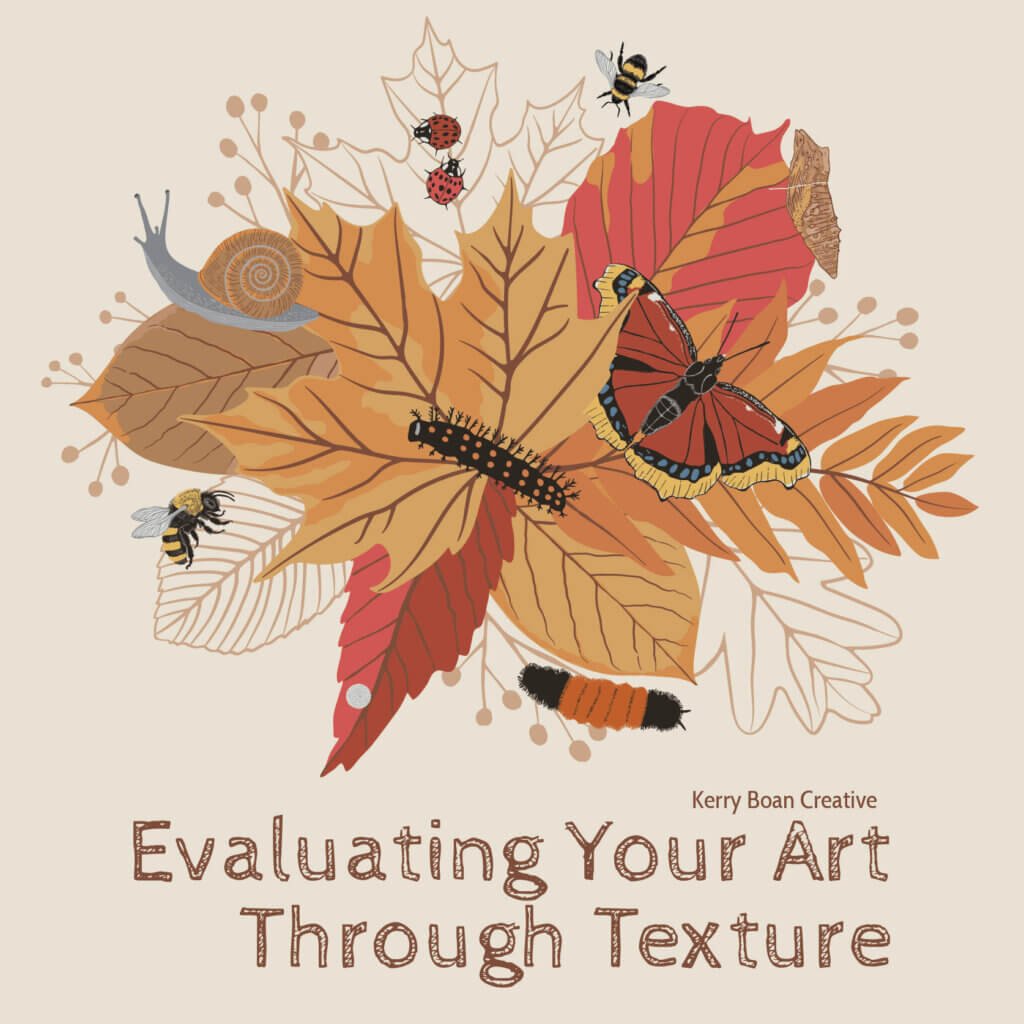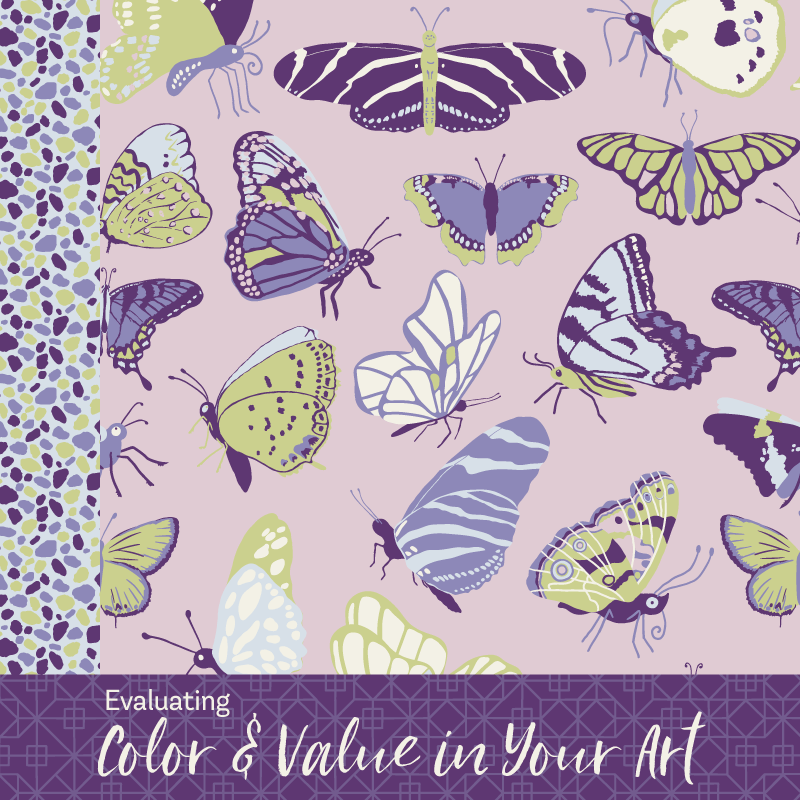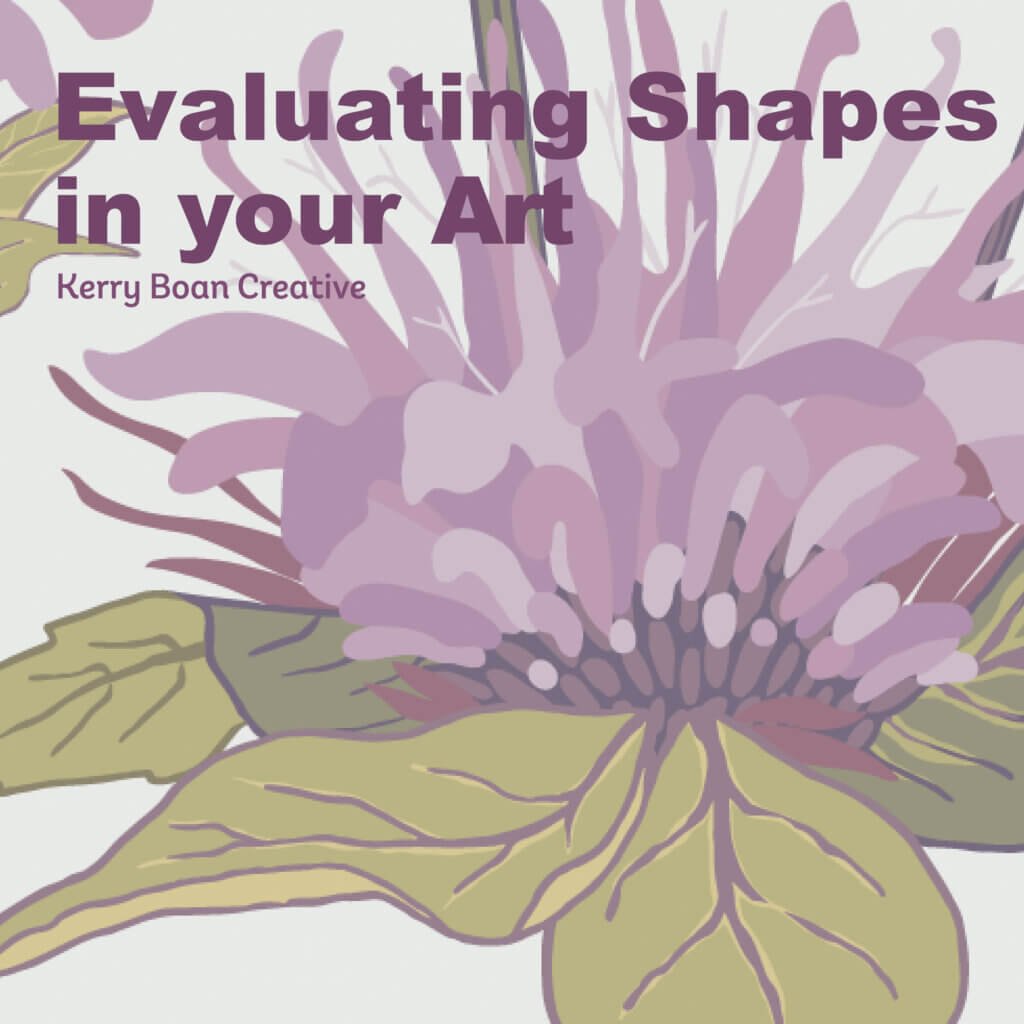Form is one of the seven elements of art, and is usually described as the way an object looks three-dimensional. In traditional art, form is created through shading, cross-hatching, stippling, or value shifts that model light and shadow. But form does not have to come from those techniques alone. In stylized and abstracted art, form can be suggested in other ways, through contour lines, overlapping, layering, color, and texture.
Form through contour & line weight
Line can add structure and dimension depending on how it is drawn.
- Thick or bold contours emphasize weight and solidity
- Thin or delicate contours feel light and fragile
- Varied line weight suggests edges turning or shifting in space
Form through color & layering
Color and value shifts can suggest depth or volume without traditional shading.
- Areas of lighter and darker color can make parts of a form pop forward or fall back
- Overlapping or layered colors create a sense of front and back
- Subtle changes in hue or value can suggest highlights or shadows
Form through overlap & arrangement
Placing motifs side by side or through layering and overlap determines whether a composition feels flat and decorative or has depth.
- Overlap establishes a hierarchy of depth
- Layering pushes some motifs forward while others fall back
- Side-by-side placement with little to no overlapping emphasizes a flat composition that is more graphic or decorative
Form through texture & pattern
Form can be created by changes in value, whether through shading, marks, or highlights. These can be applied subtly or exaggerated, depending on the style.
- Shading or blending to model light and shadow
- Cross-hatching, stippling, or other marks to build depth
- Highlights that suggest where light hits a surface
Form can be used in every style of art, from realistic to stylized to abstract, and everything in between. How you choose to use it will support the kind of work you want to create, whether that means keeping things flat and decorative or pushing toward a more dimensional look. Paying attention to how form appears in the art you admire can help you see what approaches resonate with you and how to bring them into your own work.
